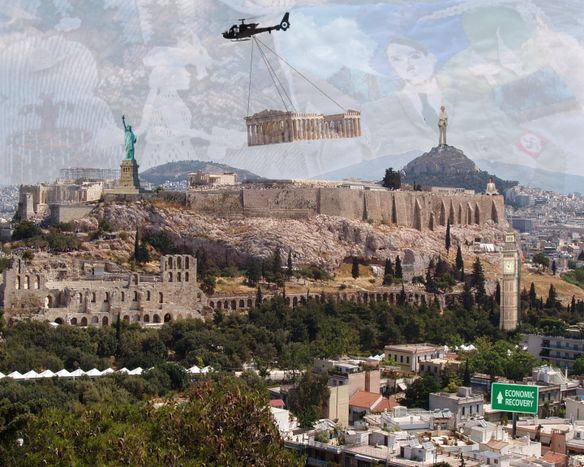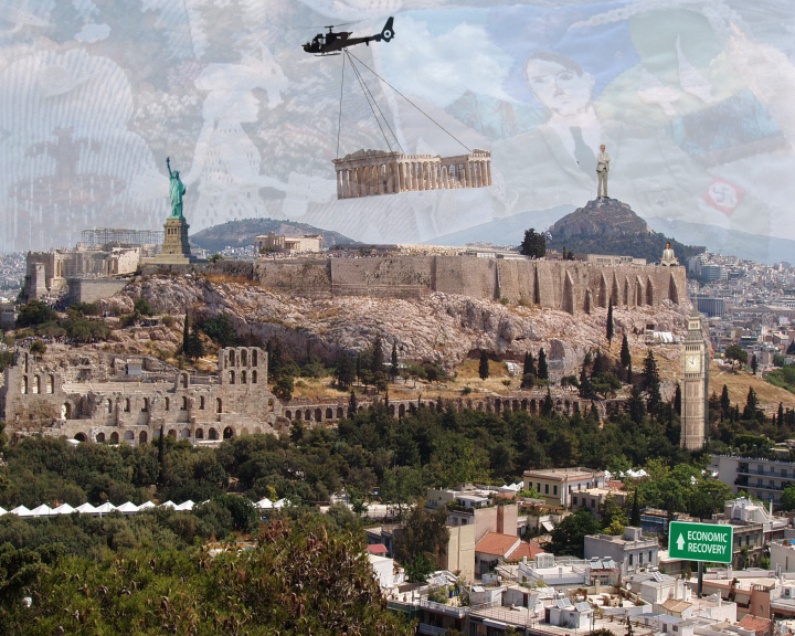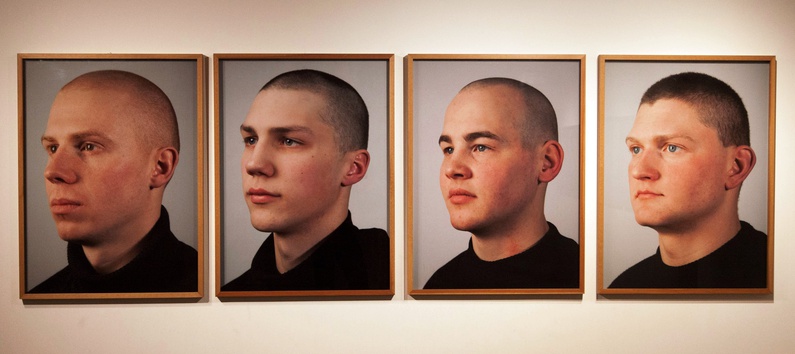
Welcome to the 'United States of Europe'?
Published on
Translation by:
 Siobhan O'Keeffe
Siobhan O'Keeffe
The travelling exhibition is dedicated to the theme of Europe today. The project addresses the difficult subject of European identity in two ways: sometimes as the product of geographical borders, at other points as the result of the Brussels administrative machine (impenetrable, but increasingly powerful). Polish, German and Italian perspectives on the exhibition
Translated by Siobhan O'Keefe
'Over the past year, this question has swept across Europe with theUnited States of Europe exhibition. It is not only the project’s creator, Johanna Suo from the Goethe Institute of Paris, who is asking herself this question. Today, the subject is making headlines in countries across the continent, yet of the 27 member countries that make up the European Union, only ten of them are hosting the touring exhibition.
United States of Europe came to Paris in February bringing with it a whole host of questions and answers, which unfortunately deterred visitors somewhat. The exhibition is notable for its distinct lack of representation of, and from, countries currently experiencing economic and political crises, such as Italy, Greece and Spain. I got the impression of a somewhat sad European union focused solely upon banks and the economy. The exhibition, featuring the works of artists such as Kyriaki Costa, Anna Konik and Anu Pennanen, introduces visitors to a whole litany of ideas that have until now never been explored because of Europe's propensity for navel-gazing.'
Flavia (Italy)
 'In 2009, the official turnout for the European parliamentary elections was 43%. The elections prompted a group of international artists to speak up and use art to ask a question fundamental to European integration: is there such a thing as a European identity? In creating the project, their aim has been not only to start a debate, but also to attempt to disseminate ideas concerning the topic.
'In 2009, the official turnout for the European parliamentary elections was 43%. The elections prompted a group of international artists to speak up and use art to ask a question fundamental to European integration: is there such a thing as a European identity? In creating the project, their aim has been not only to start a debate, but also to attempt to disseminate ideas concerning the topic.
When presenting their points of view on whether we have, or should have, a 'European State', everyone answered differently. Kyriaki Costa, a visual artist from Cyprus, shows us images of a helicopter transporting famous monuments to an unknown location, posing the question of whether a common identity might lead to us losing our cultural heritage. The Irish collective Kennedy-Browne concentrates on the economic side of integration, recording and playing to us the voices of disillusioned employees of a large company. I was particularly drawn to the installation by Estonian artist Tanja Muravskaja. Her work doesn't stop at individual identity but goes further, asking whether there is such a thing as a European race, and questioning its desirability. Her images depict pale, shaven-headed and identical soldiers, whose shocking and discomfiting conformity forces the observer to reject this homogenous idea as horrible. The exhibition leaves me wondering: is the idea of a European identity merely a political invention?'
Anna, Poland
 'United States of Europe claims to be an art exhibition, a sociological study and a pan-European forum for discussion, all at the same time. Moreover, this project of multiple goals is dedicated to 'European identity', a subject which one might consider more likely to scare people away than to make them think. Proclamations of such things as 'artistic interpretations of Europe' are often floated about when there is only an abstract and tenuous connection to the reality of Europe. So, is this project too ambitious to be interesting?
'United States of Europe claims to be an art exhibition, a sociological study and a pan-European forum for discussion, all at the same time. Moreover, this project of multiple goals is dedicated to 'European identity', a subject which one might consider more likely to scare people away than to make them think. Proclamations of such things as 'artistic interpretations of Europe' are often floated about when there is only an abstract and tenuous connection to the reality of Europe. So, is this project too ambitious to be interesting?
The installation betrays the financial difficulties run into by the project, as well as an implicit bias – for instance, in the organisers' decision of which languages to translate the installation into, and which to leave untranslated. However, the project shines is in its attention to detail: the exhibition guide is presented in the form of an 'exhibition passport' bearing the words 'United States of Europe'. For my erasmus/ interrail generation, travelling anywhere in Europe without concern for borders is nothing out of the ordinary. I find it hard to remember a time when we paid with lira in Italy and had to pass through customs to go to the Czech Republic. Flicking through the guide, which features artists who have travelled from all over the continent to take part in the exhibition, I'm reminded of how I used to give my address as 'the Universe - Milky Way - Solar System - Europe - Germany...' If I introduce myself today, I won't say that 'I'm European'. I admit that that it's probably not very 'europhile' of me, but at least after visiting the exhibition I know that it's not just a personal problem, but a European one.'
Kathrin, Germany
*After opening in Łódź (Poland), the touring exhibition United States of Europe stopped off in Finland, Lithuania, Portugal, Cyprus, Germany, Bulgaria, France and Ireland, before ending its run in the 'capital of Europe', Brussels
Translated from Bienvenue aux Etats Unis d'Europe?


